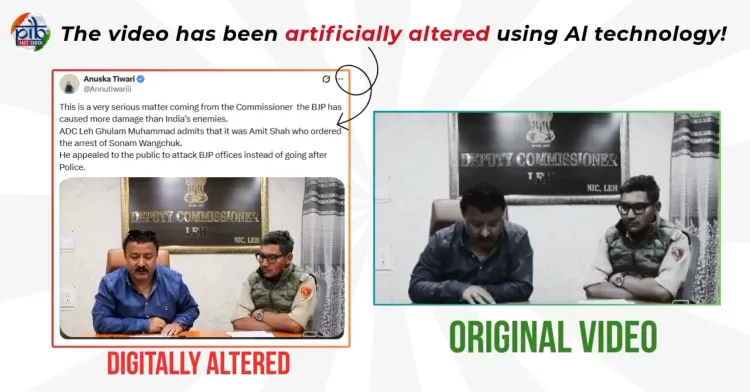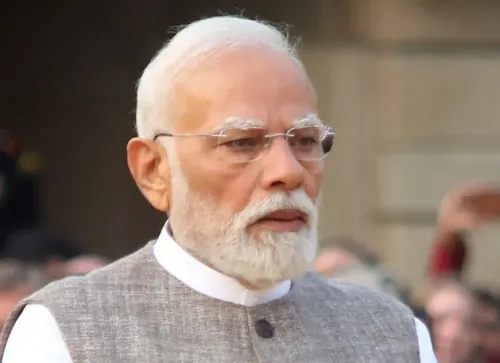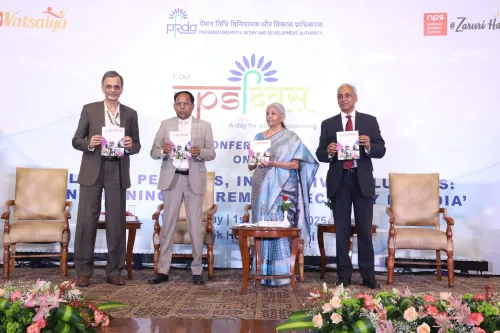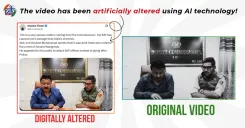Did PIB Expose a Deepfake Video Misattributing Statements to ADC Leh Regarding Sonam Wangchuk’s Arrest?

Synopsis
Key Takeaways
- PIB debunks false claims made by a deepfake video regarding ADC Leh.
- Wangchuk's arrest has sparked significant unrest in Ladakh.
- Deepfake technology is being weaponized to manipulate public perception.
- Importance of fact-checking is emphasized to combat misinformation.
- Public urged to verify content before sharing.
New Delhi, Oct 2 (NationPress) In a decisive response to the spreading of false information across social media platforms, the Press Information Bureau (PIB) has conducted a fact check clarifying that a digitally manipulated video of Additional Deputy Commissioner (ADC) Leh, Ghulam Muhammad, is circulating with misleading claims about the arrest of climate activist Sonam Wangchuk.
The altered video, created using artificial intelligence, inaccurately depicts the ADC making a statement that Wangchuk was taken into custody at the behest of the Ministry of Home Affairs (MHA). The PIB’s Fact Check unit emphatically stated that ADC Leh has not made such a declaration, and that the video is a deepfake intended to mislead the public and incite alarm.
“Fake AI videos are being disseminated to mislead and provoke panic,” the PIB cautioned, urging the public to authenticate content before sharing it and to report any misleading material to the appropriate authorities.
The questionable video emerged shortly after Wangchuk’s apprehension under the National Security Act (NSA) on September 26, following violent protests in Leh that demanded Sixth Schedule status and statehood for Ladakh. This unrest resulted in four fatalities and nearly 90 injuries. Wangchuk was later relocated to Jodhpur Jail in Rajasthan.
This is not the first occurrence of deepfake content targeting officials in Ladakh. Previously, a similar AI-generated video falsely represented statements from Ladakh DGP SD Singh Jamwal, alleging that Wangchuk’s arrest was ordered by the Defence Minister. That video was also debunked by PIB, resulting in an FIR filed by Leh Police under sections of the Bharatiya Nyaya Sanhita and the IT Act.
The spread of such manipulated videos raises significant concerns about the weaponization of AI technology to distort public dialogue and erode trust in institutions. Experts warn that deepfakes can undermine democratic processes by fabricating statements from public officials, particularly during politically sensitive periods.
The Leh administration has reaffirmed its dedication to maintaining peace and transparency, urging the public to avoid sharing unverified content. Meanwhile, civil society groups continue to call for Wangchuk’s release and a peaceful resolution to Ladakh’s political issues.
As misinformation becomes increasingly sophisticated, fact-checking agencies and digital literacy are becoming essential tools for preserving public trust. The PIB’s prompt response highlights the necessity for institutional vigilance in this age of AI-generated deception.









